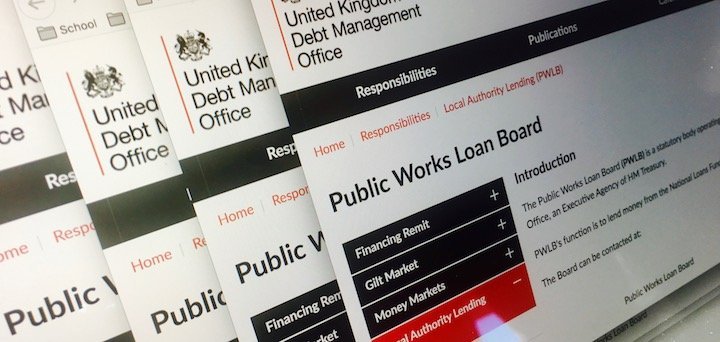
Councils borrowed just £80m through the Public Works Loan Board (PWLB) during the first full month since the Treasury’s rate rise, a mere 4% of August’s total.
Just two authorities – Transport for London (£70m) and City of Edinburgh (£8.4m) – made up 98% of the month’s borrowing, with the remainder being taken in amounts of below £500,000 by parish councils.
SAVE THE DATE – LATIF NORTH
March 25th, 2020, Manchester
Council treasury investment & borrowing
TfL’s loan benefited from the local infrastructure rate, which only charges 60 basis points over gilts, compared to the 180bps over gilts now being charged on normal PWLB loans.
Edinburgh’s loans were taken at the concessionary rate, giving it a smaller discount of 20bps on its loan.
The dramatic dip follows an October total of £469.3m, which was the lowest since September last year, and included loans taken out before the Treasury’s decision to add one percentage point to the margin it charges on the loans.
David Blake, strategic director at treasury manager Arlingclose, said most local authorities are tapping the inter-authority lending market in the wake of the decision.
Blake said that the £3.6bn taken out by councils from the PWLB in August and September, Blake is currently providing a cushion for councils looking to borrow.
He said: “The bumper borrowing done in August and September will have provided plenty of liquidity for locals for the time being; some of that will be recycled peer to peer.”
He added that councils might have been cautious in the
However, he added that some “dubious funding offers” are doing the rounds via brokers and private placements.
“I doubt these are getting much traction with savvy borrowers,” Blake said.
“If local authorities are serious about alternative funding they should think about what they need and the wider choice of solutions available.
“Better to go to investors with a firm plan, rather than responding to opportunistic offers from those looking to screw a bit of extra yield out of the sector.”
Blake added that some investors are even offering Lender Option Borrower Option (LOBO) loans, a product which has fallen out of favour in recent years and been the subject of adverse publicity in the national press.
“We see them offered from time to time by investors,” Blake said.
“They may be called by a different name or have superficial optionality in the borrower’s ‘favour’, but fundamentally they are just LOBOs with a false moustache and a pair of glasses.
“Our advice is to avoid. Local authorities need to value all the components of a loan, including options, and any other covenants carefully. It’s not just about the rate and ‘beating’ the PWLB.”
With the Treasury now making a margin of 1.8% over gilts on most of its PWLB lending, central government stands to lose millions of pounds a year if November’s low borrowing rates continue.
Although the stated aim of the rate rise was to dampen the rate of local authority borrowing, Blake said the Treasury “could consider they have over-egged the pudding at 1.8% over gilts.
“They do want to be the primary lender to locals, but they are currently well shy of that.”
Blake also said that the result of the general election could also have a bearing on PWLB policy, which the Treasury says it is constantly reviewing.
Transport for London said it would use its £70m of borrowing to pay for accessibility improvements at London Underground stations.
The Room151 Weekly Newsletter covers local government treasury and pension investment, funding, development, resources and technical finance. Register here.
The LGPS Quarterly Briefing focuses purely on pension fund investment. Register here.












